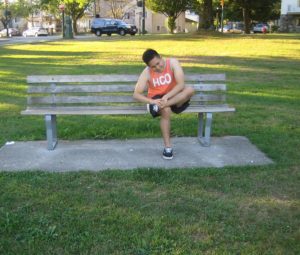Plantar fasciitis is considered as the main usual root of heel pain. It is important to note that the plantar fascia is the even bundle of tissue which links the heel bone with the toes. It is responsible for supporting the foot arch. If the plantar fascia is strained, it becomes weak, swollen and irritated. Due to this, the heel or base of the foot is painful when walking or standing.
This condition is common among middle-aged individuals but can occur among younger individuals who are using their feet extensively. Plantar fasciitis can develop in one or both feet.
What are the causes?
Plantar fasciitis is triggered by any strain on the ligament supporting the arch. Constant strain can cause miniature tears in the ligament which leads to pain and swelling. This is likely to occur if:
- Rolling the feet inwards excessively when walking
Allow the foot time to rest. Limit activities that trigger foot pain. - Overweight
- Having high arches or flat feet
- Walking, running or standing for extended periods of time
- Wearing shoes that poorly fit or already worn out
- Having tight Achilles tendon or calf muscles
What are the indications of plantar fasciitis?
Many individuals with plantar fasciitis have pain upon getting out of bed in the morning or being seated for long hours. The pain and stiffness settle after taking a few steps. On the other hand, the foot might hurt more as the day goes on. It might also hurt more intensely when moving up stairs or after standing for a long time.
If the individual experiences foot pain at night, it might be a different condition such as arthritis or nerve condition such as tarsal tunnel syndrome.
Management
There is no specific treatment that works effectively for those with plantar fasciitis but there are measures that can help:
- Allow the foot time to rest. Limit activities that trigger foot pain. Avoid walking or running on hard surfaces.
- Apply an ice pack on the heel to reduce the swelling and pain or provide an over-the-counter pain medication such as ibuprofen or naproxen.
- Perform toe and calf stretching as well as towel stretches several times throughout the day especially when waking up in the morning.
- Purchase a new pair of shoes especially one that provides good arch support and a cushioned sole. Heel cups or shoe inserts can also be used in both shoes even if only one foot is affected.
In case these measures are not effective, the doctor might recommend the use of splints that are worn at night, steroid shots in the heel or other treatment options. In some cases, surgery is also required. The doctor might only suggest surgery for those who are still in pain after using other treatment options for 6-12 months.

